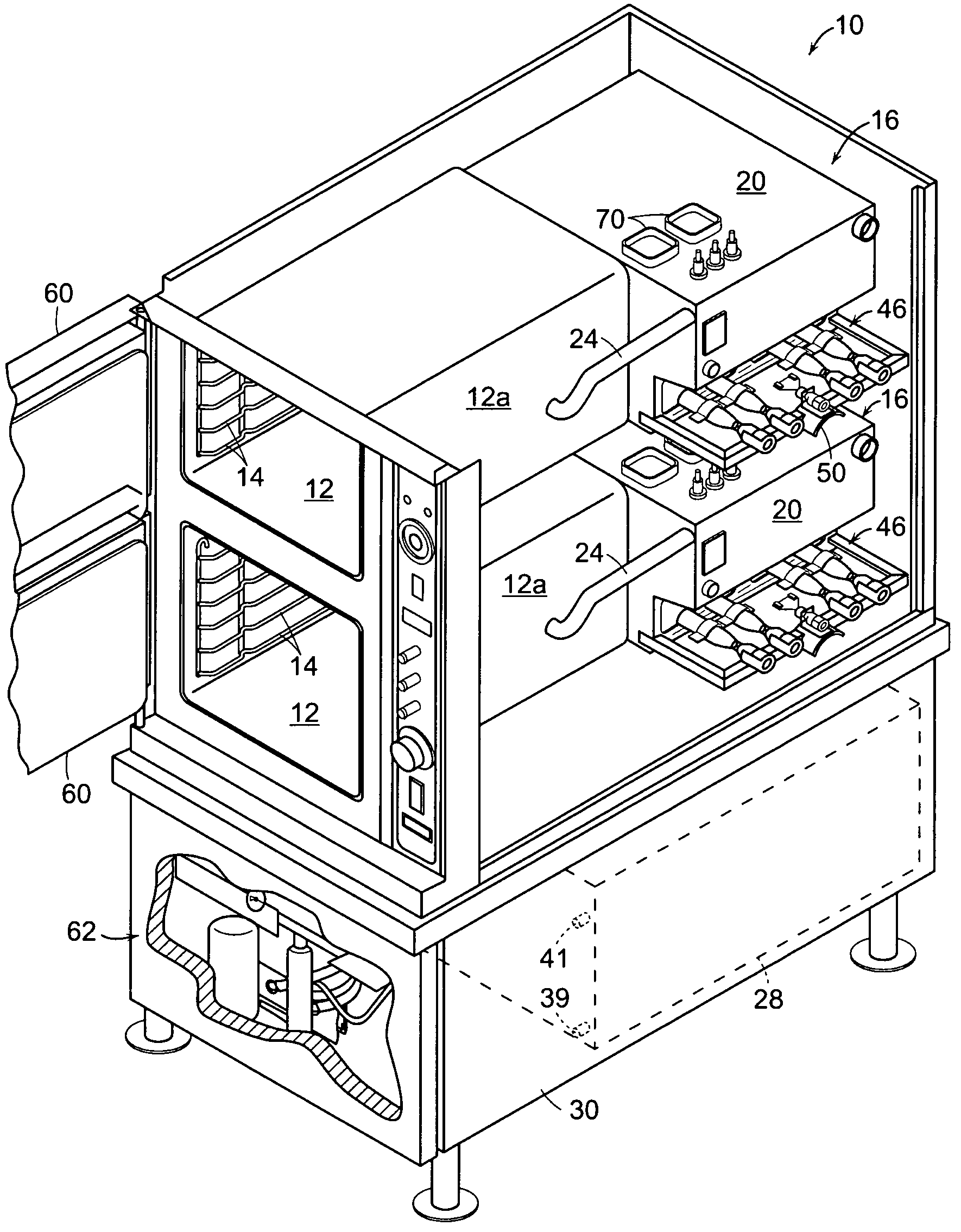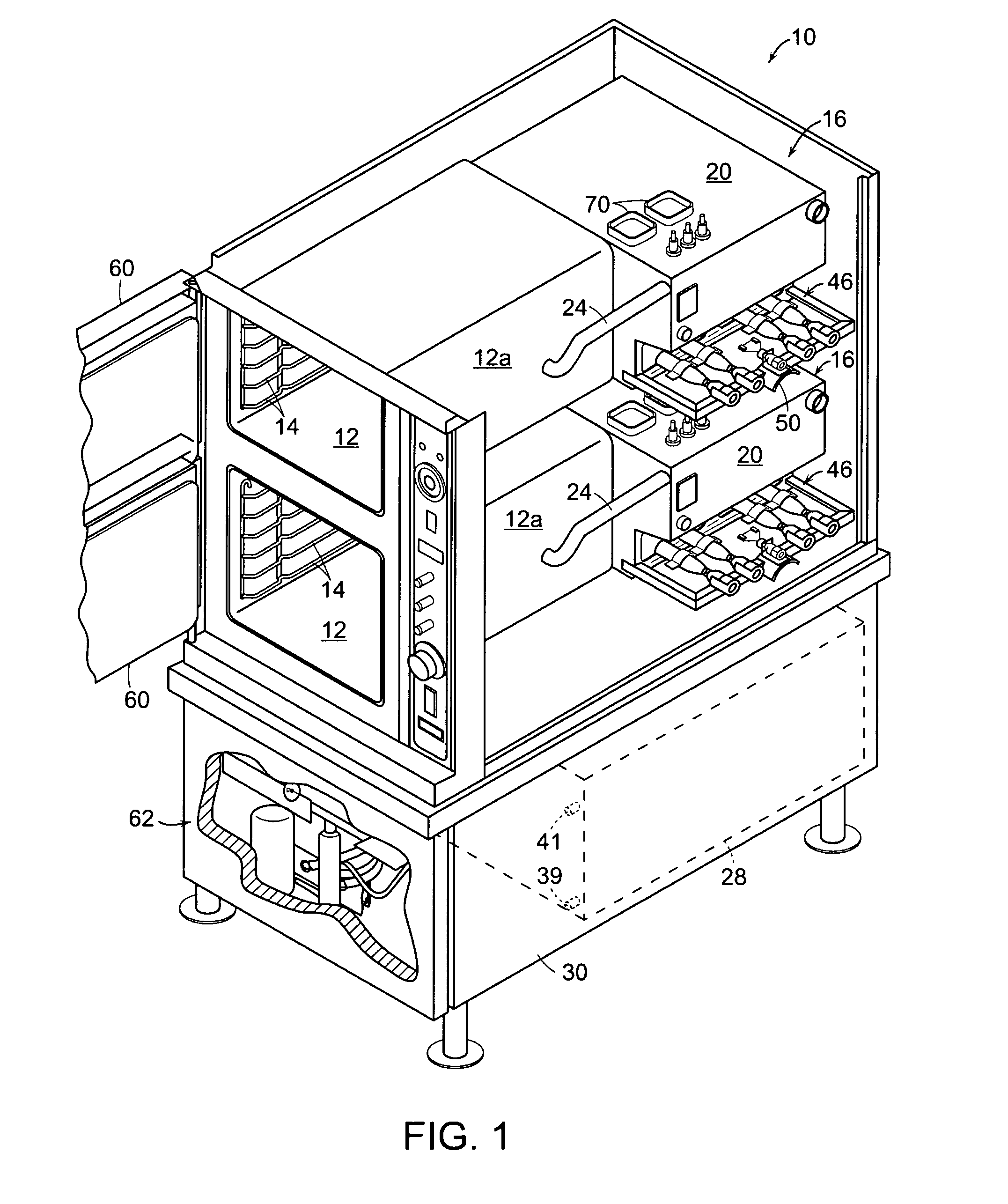High efficiency atmospheric steamer
a steam cooker and high efficiency technology, applied in the field of steam cookers, can solve the problems of excessive water consumption, slow steam cookers that use steam, and the water consumption of commercial steam cookers can exceed 50 gallons per hour, and achieve the effect of high integration
- Summary
- Abstract
- Description
- Claims
- Application Information
AI Technical Summary
Benefits of technology
Problems solved by technology
Method used
Image
Examples
Embodiment Construction
[0029]FIGS. 1-4 show a pressureless or atmospheric slow steam cooker 10 according to the present invention. As illustrated, the cooker 10 is a freestanding floor unit with two vertically stacked cooking compartments 12 that each can receive up to five full-sized cooking pans slid into the compartments on racks 14 to provide a high cooking capacity. Each cooking compartment or oven 12 has an associated steam generator 16 that heats a supply 18 of water held in a tank 20 to produce steam 22 that is directed from a steam outlet 20a by conduits 24, 24 to opposite side walls 12a, 12a of the associated cooking compartment. On start up the steam displaces cold air from the cooking compartment. Then, as it fills and circulates within the cooking compartment 12, the steam gives up heat to the food to thaw, cook and / or warm it. In giving up its heat, the steam cools to become cooler, wet steam and condensate. This steam and condensate, along with food particulates produced by the cooking, col...
PUM
 Login to View More
Login to View More Abstract
Description
Claims
Application Information
 Login to View More
Login to View More - R&D
- Intellectual Property
- Life Sciences
- Materials
- Tech Scout
- Unparalleled Data Quality
- Higher Quality Content
- 60% Fewer Hallucinations
Browse by: Latest US Patents, China's latest patents, Technical Efficacy Thesaurus, Application Domain, Technology Topic, Popular Technical Reports.
© 2025 PatSnap. All rights reserved.Legal|Privacy policy|Modern Slavery Act Transparency Statement|Sitemap|About US| Contact US: help@patsnap.com



